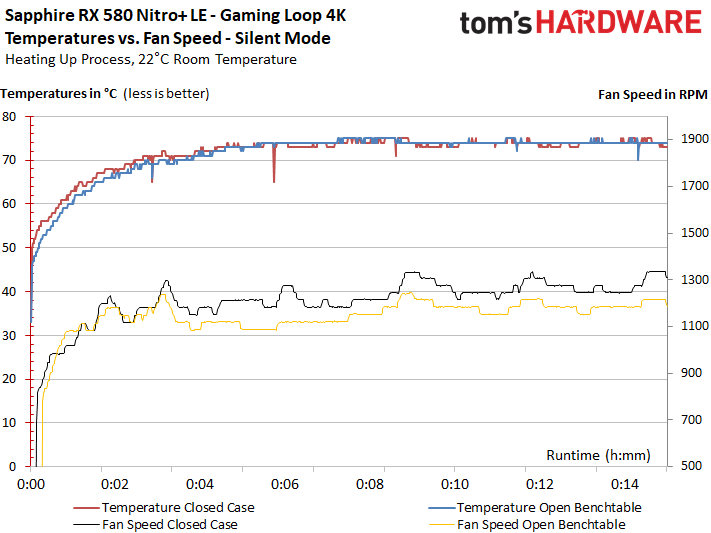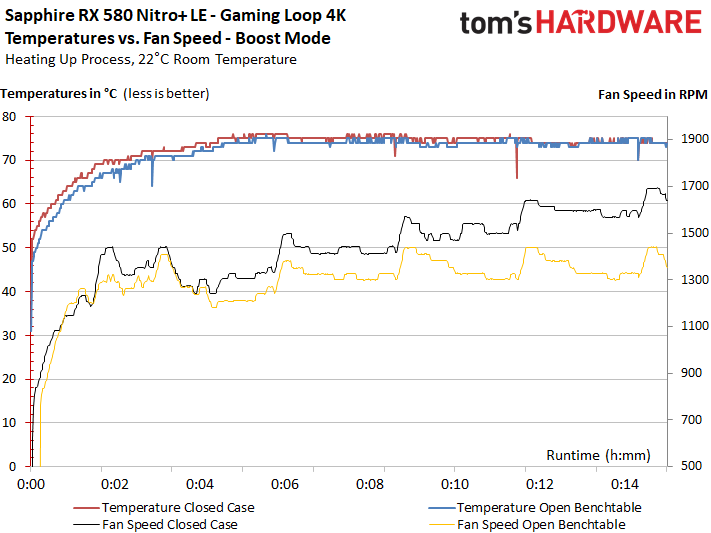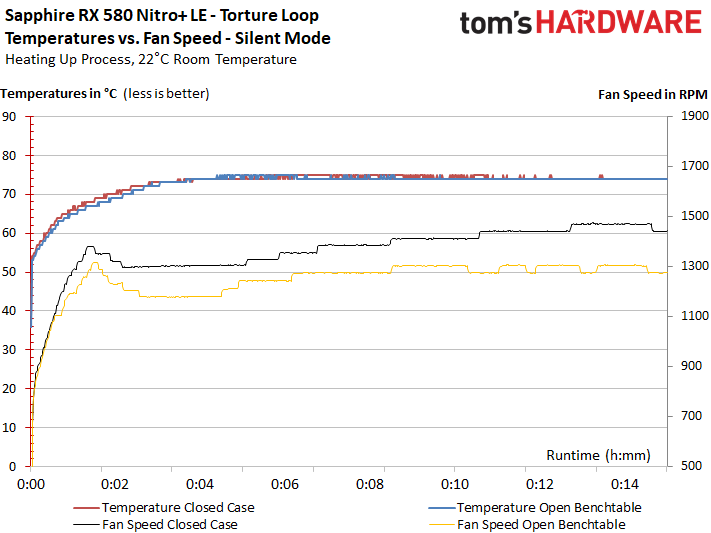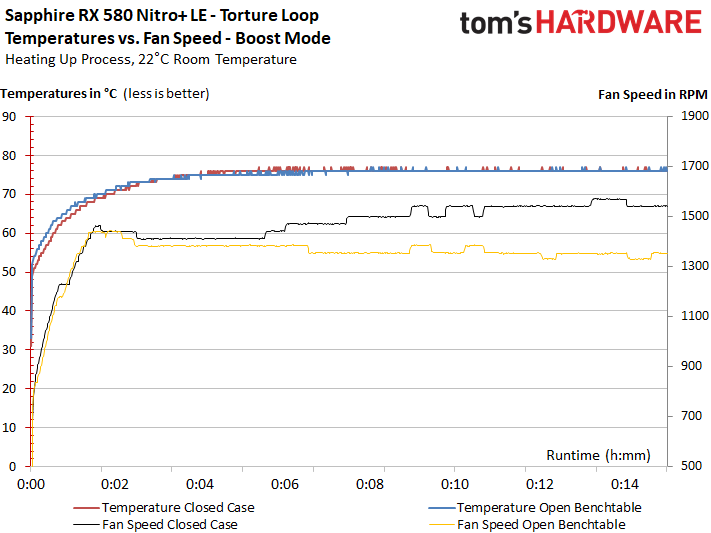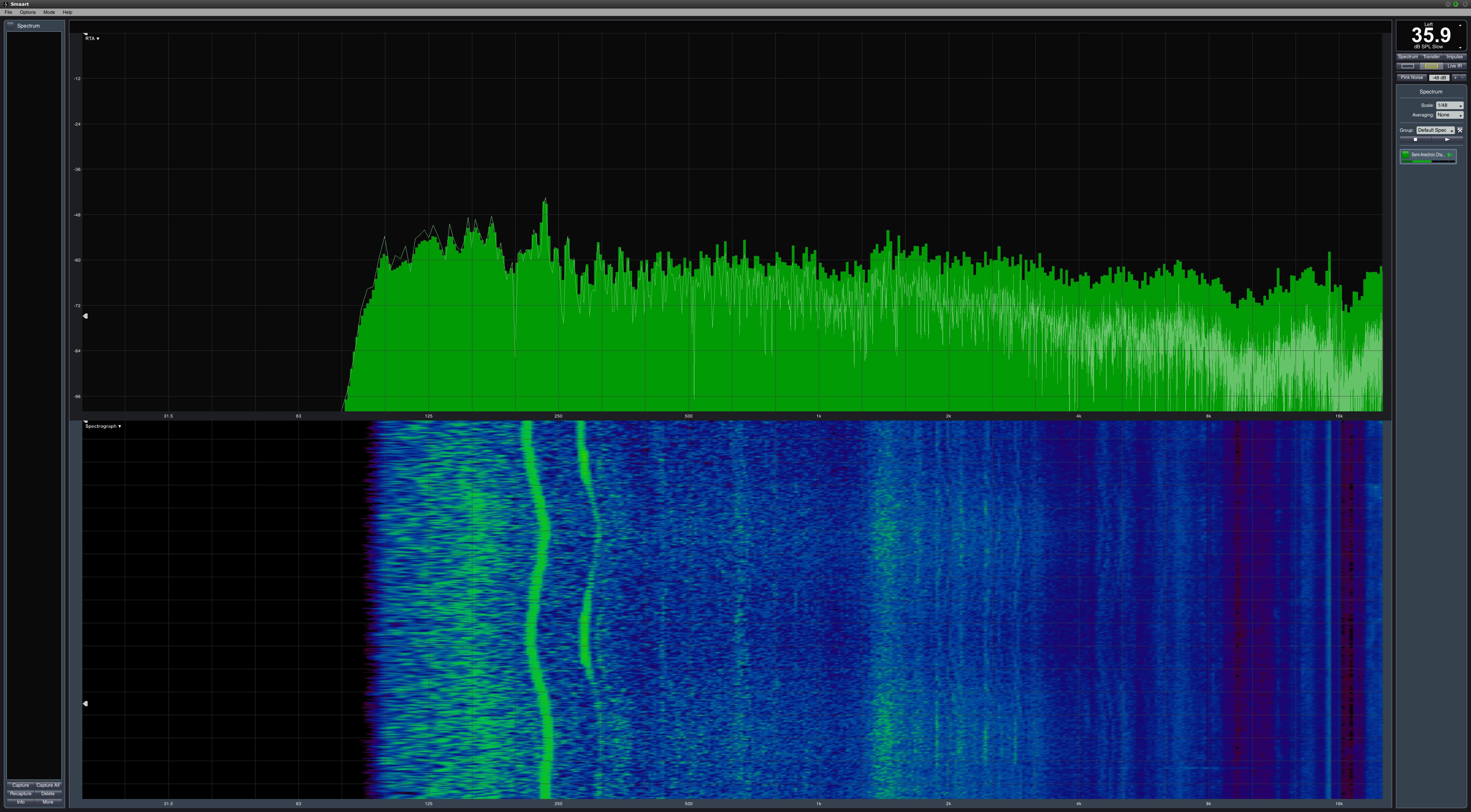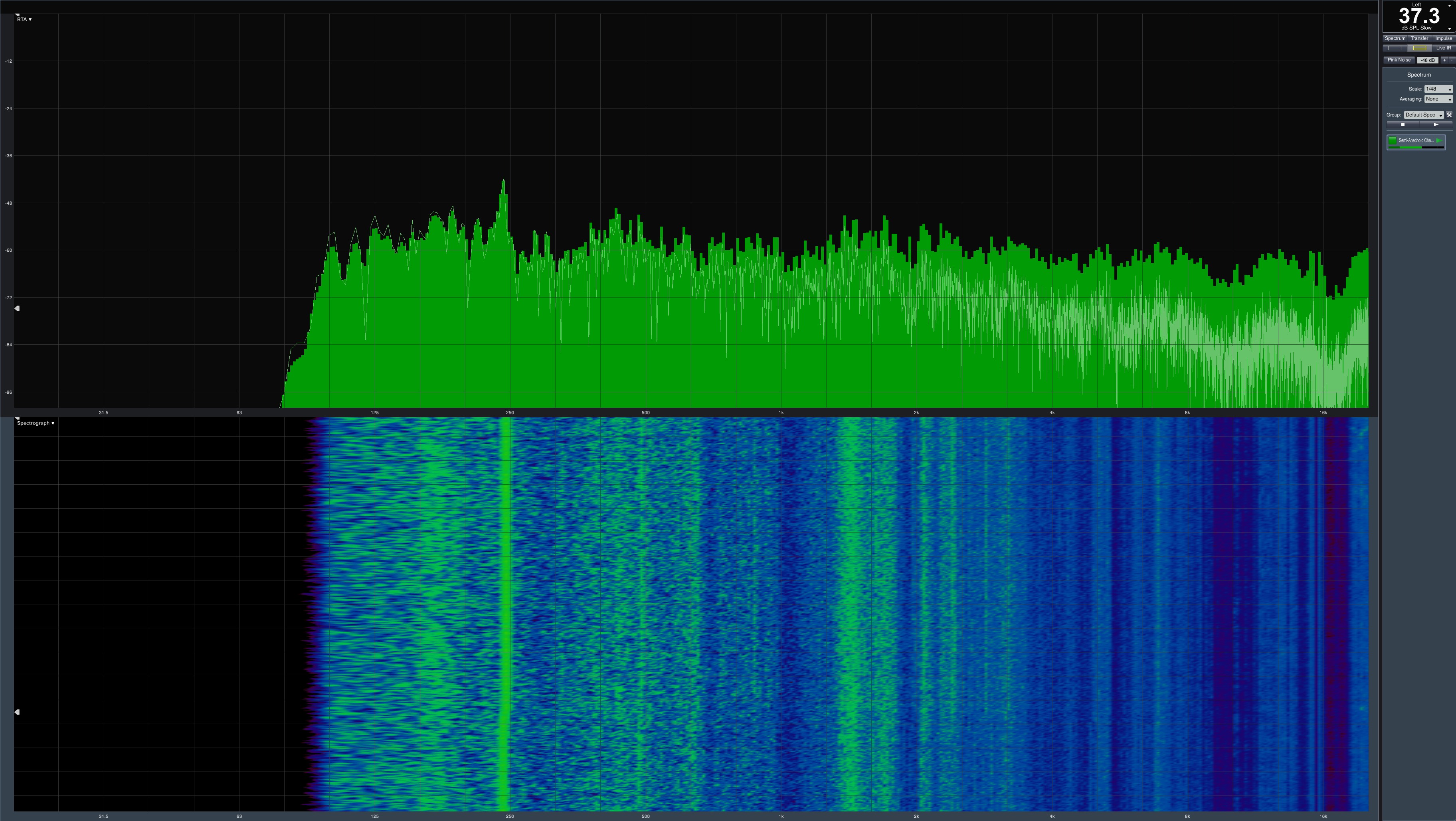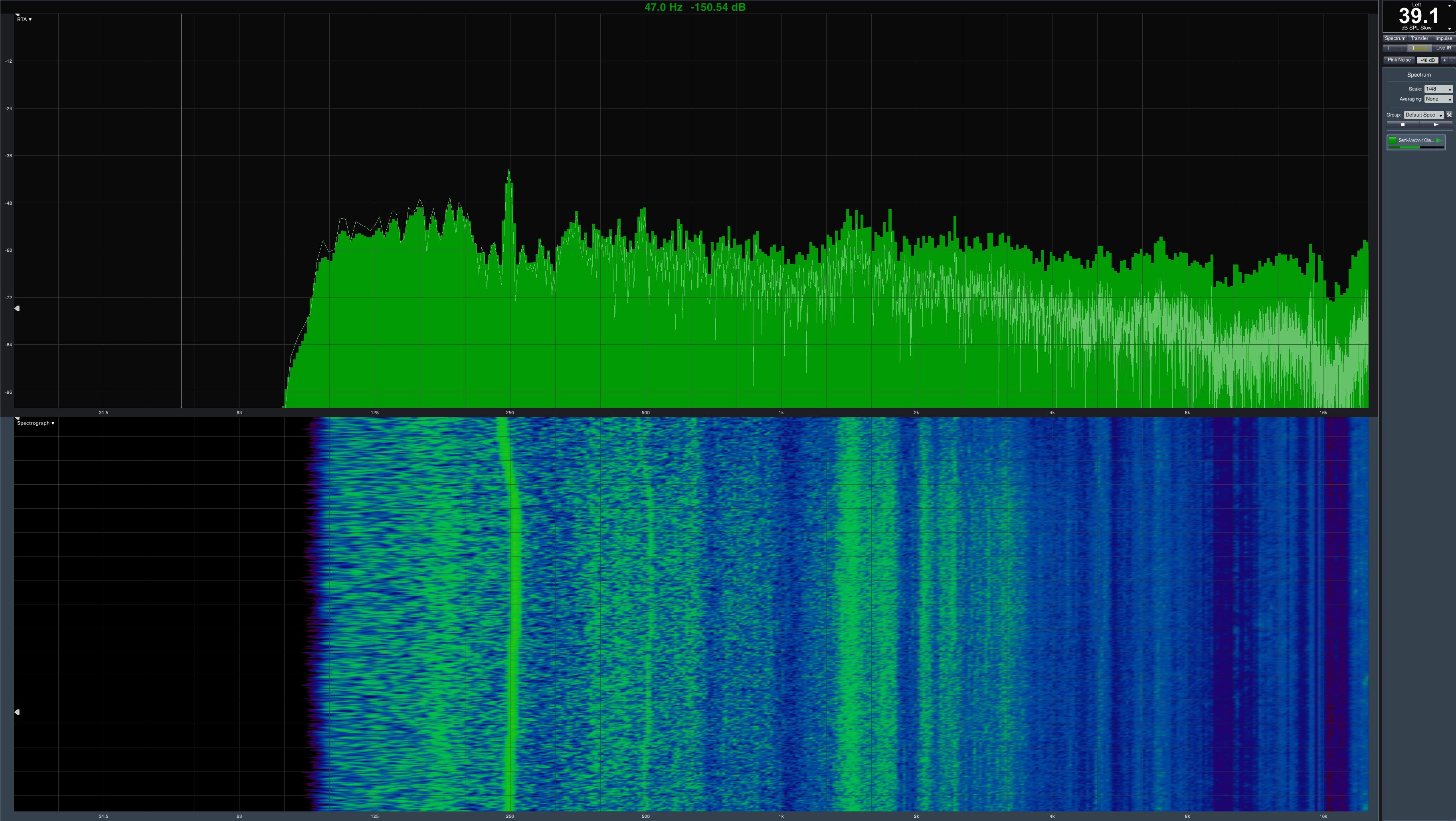AMD Radeon RX 580 8GB Review
Why you can trust Tom's Hardware
Fan Speed and Noise
Fan RPM and Fan Control
Sapphire promised a fan controller that would react to load changes much more quickly than before, and the company kept its word. The temperature curves didn't really illustrate this, so we decided to chart the fan speeds we logged during our tests instead, starting with the gaming loop:
The boost mode curve shows that the fans have to push hard in a closed case to keep Sapphire's temperatures within reason. This is why the board and components mounted on it are so much cooler, even though the GPU itself operates at the same temperature as silent mode. The fans spin at 1700 RPM. That's 300 RPM faster than our silent mode measurements. This also shows why we make it a point to test inside of a case.
Repeating the process with our more taxing stress test yields surprising results: in silent mode, the fans spin at 1500 RPM. This is a big increase compared to what we found in the gaming loop.
In boost mode, however, the fans don't get up to the same 1700 RPM. Rather, they remain just under 1600 RPM. Their speed is more consistent, reflecting a balanced curve.
Even though these results might seem puzzling (why spin slower under a heavier load?), they actually make sense. Sapphire set its fan controller to react to changes in load, and the gaming loop generates bigger spikes than the stress test. Our power consumption numbers bear this out.
Noise
Sapphire's noise levels land right around 36 dB(A) in silent mode during our gaming loop. This is a quiet graphics card, to be sure. An analysis of the frequency spectrum yields more interesting findings: the lines between 220 and 300 Hz are caused by fan bearings and vibrations; they fluctuate along with fan speed and load changes.
The mark from ~1400 Hz upwards is indicative of the actual fan noise. And the high-frequency strip at approximately 15 kHz represents electrical noises (coil whine), which is well within reason.
Get Tom's Hardware's best news and in-depth reviews, straight to your inbox.
Switching to boost mode doesn’t have much of an impact on the noise level, which goes up by 1.4 dB(A), or the frequency spectrum.
Hitting the card in boost mode with our stress test adds another 1.8 dB(A). The resulting 39 dB(A) is audible, but the noise's gentle whooshing character helps Sapphire's Nitro+ Radeon RX 580 Limited Edition blend into the background.
Although there are certainly quieter coolers out there, Sapphire achieves a good balance between size, weight, performance, and noise. Again, kudos to Sapphire for listening to feedback and implementing improvements that result in better products.
MORE: Best Graphics Cards
MORE: Desktop GPU Performance Hierarchy Table
MORE: All Graphics Content

Igor Wallossek wrote a wide variety of hardware articles for Tom's Hardware, with a strong focus on technical analysis and in-depth reviews. His contributions have spanned a broad spectrum of PC components, including GPUs, CPUs, workstations, and PC builds. His insightful articles provide readers with detailed knowledge to make informed decisions in the ever-evolving tech landscape
